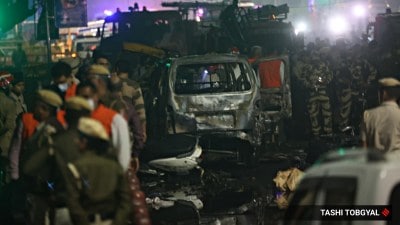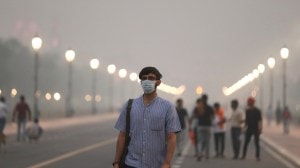Stay updated with the latest - Click here to follow us on Instagram
Before and after photos show the extent of destruction after Turkey earthquake
Satellite photos of parts of Turkey, taken days after the massive earthquake, paint a grim picture of the damage to roads, buildings and other key infrastructural elements.
 Before and after photos chart the extent of destruction of Turkey earthquake. (Satellite image ©2023 Maxar Technologies/Handout via Reuters)
Before and after photos chart the extent of destruction of Turkey earthquake. (Satellite image ©2023 Maxar Technologies/Handout via Reuters) Satellite photos from Turkey, taken days after a massive 7.8 magnitude earthquake and its aftershocks hit the region, paint a grim picture of the damage caused by the disaster. Tumbling buildings, dust-coated roads, and uprooted trees pepper the landscape. More than 15,000 people have died so far and the numbers are expected to go up as rescuers work round the clock to dig through the rubble.
According to experts, the survival window for those trapped under the rubble was closing rapidly but it was too soon to abandon hope. “The first 72 hours are considered to be critical,” said Steven Godby, a natural hazards expert at Nottingham Trent University in England told the news agency Associated Press. “The survival ratio on average within 24 hours is 74%, after 72 hours it is 22% and by the fifth day it is 6%.”
Comparing the satellite photos taken on July 26, 2022, and February 8, 2023, it’s evident how the region surrounding Turkey’s Kahramanmaras stadium has been affected. While the photo taken prior to the quake show lush, tree-lined streets, the after photos show buildings and roads coated in the dust while the oval football stadium is filled with emergency shelters for earthquake victims.

 This combination of July 26, 2022 and Feb. 8, 2023 satellite images provided by Maxar Technologies shows buildings and a stadium in downtown Kahramanmaras, Turkey before and after a powerful earthquake struck the region on Feb. 6, 2023. (AP/PTI)
This combination of July 26, 2022 and Feb. 8, 2023 satellite images provided by Maxar Technologies shows buildings and a stadium in downtown Kahramanmaras, Turkey before and after a powerful earthquake struck the region on Feb. 6, 2023. (AP/PTI)
In Antakya, the capital of the severely-affected Hatay province, similar scenes are discernable. Compared to the photo taken on December 22, 2022, it is clear in the photo taken on Wednesday, February 8, 2023, that several buildings have been razed to the grounds or rendered inhabitable by the quake. Former residents of a collapsed building huddled around an outdoor fire overnight into Thursday, wrapping blankets tightly around themselves to try and stay warm, reported the news agency AP.

 This combination of Dec. 22, 2022 and Feb. 8, 2023 satellite images provided by Maxar Technologies shows buildings in Antakya, Turkey, before and after a powerful earthquake struck the region on Feb. 6, 2023. (AP/PTI)
This combination of Dec. 22, 2022 and Feb. 8, 2023 satellite images provided by Maxar Technologies shows buildings in Antakya, Turkey, before and after a powerful earthquake struck the region on Feb. 6, 2023. (AP/PTI)
As per reports, families in the disaster zone slept in their cars or in the streets under blankets in freezing cold, fearful of going back into buildings shaken by the tremors. Turkish officials say some 13.5 million people were affected in an area spanning roughly 450 km from Adana in the west to Diyarbakir in the east.
Turkey’s President Recep Tayyip Erdogan visited the hard-hit province of Hatay on Wednesday, where residents have criticised the government’s efforts, saying rescuers were slow to arrive.
According to the disaster management agency, more than 110,000 rescue personnel were now taking part in the effort and more than 5,500 vehicles, including tractors, cranes, bulldozers and excavators had been shipped. The task is monumental, however, with thousands of buildings toppled by the earthquake.
(With inputs from the Associated Press)





- 01
- 02
- 03
- 04
- 05


























